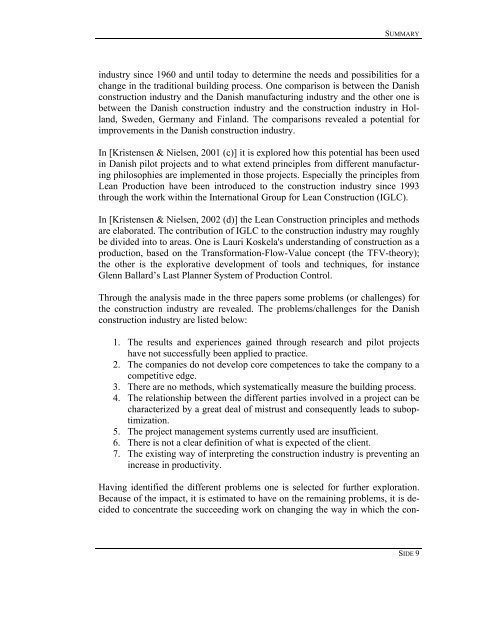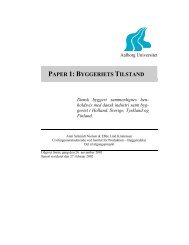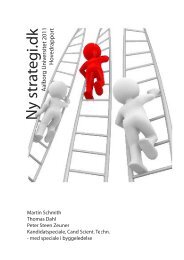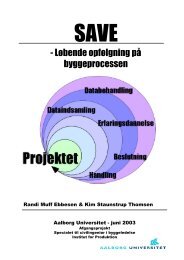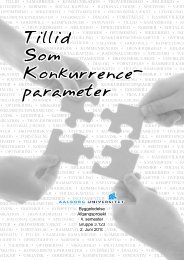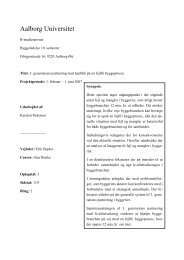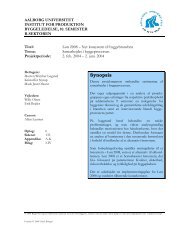Institut for produktion Civilingeniøruddannelsen i Byggeledelse
Institut for produktion Civilingeniøruddannelsen i Byggeledelse
Institut for produktion Civilingeniøruddannelsen i Byggeledelse
You also want an ePaper? Increase the reach of your titles
YUMPU automatically turns print PDFs into web optimized ePapers that Google loves.
SUMMARY<br />
industry since 1960 and until today to determine the needs and possibilities <strong>for</strong> a<br />
change in the traditional building process. One comparison is between the Danish<br />
construction industry and the Danish manufacturing industry and the other one is<br />
between the Danish construction industry and the construction industry in Holland,<br />
Sweden, Germany and Finland. The comparisons revealed a potential <strong>for</strong><br />
improvements in the Danish construction industry.<br />
In [Kristensen & Nielsen, 2001 (c)] it is explored how this potential has been used<br />
in Danish pilot projects and to what extend principles from different manufacturing<br />
philosophies are implemented in those projects. Especially the principles from<br />
Lean Production have been introduced to the construction industry since 1993<br />
through the work within the International Group <strong>for</strong> Lean Construction (IGLC).<br />
In [Kristensen & Nielsen, 2002 (d)] the Lean Construction principles and methods<br />
are elaborated. The contribution of IGLC to the construction industry may roughly<br />
be divided into to areas. One is Lauri Koskela's understanding of construction as a<br />
production, based on the Trans<strong>for</strong>mation-Flow-Value concept (the TFV-theory);<br />
the other is the explorative development of tools and techniques, <strong>for</strong> instance<br />
Glenn Ballard’s Last Planner System of Production Control.<br />
Through the analysis made in the three papers some problems (or challenges) <strong>for</strong><br />
the construction industry are revealed. The problems/challenges <strong>for</strong> the Danish<br />
construction industry are listed below:<br />
1. The results and experiences gained through research and pilot projects<br />
have not successfully been applied to practice.<br />
2. The companies do not develop core competences to take the company to a<br />
competitive edge.<br />
3. There are no methods, which systematically measure the building process.<br />
4. The relationship between the different parties involved in a project can be<br />
characterized by a great deal of mistrust and consequently leads to suboptimization.<br />
5. The project management systems currently used are insufficient.<br />
6. There is not a clear definition of what is expected of the client.<br />
7. The existing way of interpreting the construction industry is preventing an<br />
increase in productivity.<br />
Having identified the different problems one is selected <strong>for</strong> further exploration.<br />
Because of the impact, it is estimated to have on the remaining problems, it is decided<br />
to concentrate the succeeding work on changing the way in which the con-<br />
SIDE 9


